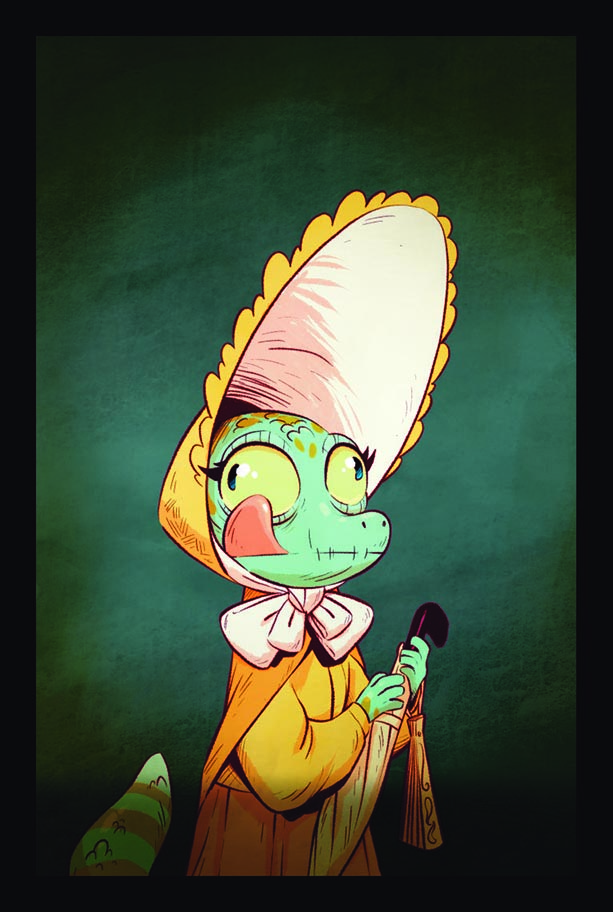
Some of my favorite game art is polished yet expressive and distinct at the same time. When I came across the board game 5-Minute Mystery I knew that we needed to feature the vibrating lines from the illustrator here on GHG. The name is Cam Kendell and he is from Utah, USA.
Tell us a little about your artistic background?
I grew up drawing countless Ninja turtles, He-Man characters, and an endless supply of Jim Davis-esque animal characters. Comic Strips were my main form of artistic outlet. I drew a lot up until High School when I slowed down to focus on Music and learn to play the accordion.
I attended Utah Valley University for Audio Engineering and then switched focus to get an associate degree in Visual Art and Communication. During that time I also worked as an Art Director and Miniature Painter for Blue Table Painting, painting clients’ mins for Warhammer Fantasy, Warhammer 40,000, Warmachine, Dungeons and Dragons, and various other games. Around 2013 I left that job to pursue Freelance Illustration work full-time. Now, here I am.
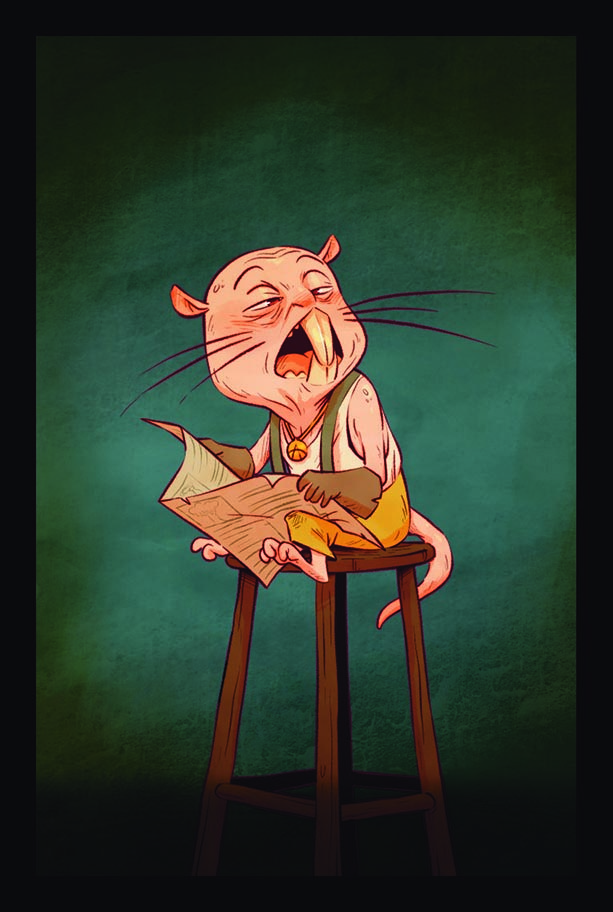

What games have you worked on before and how did you get to work on the successfully launched ‘5-minute mystery’ and the new release Dungeon Mayhem: Monster Madness?
The first game I provided illustration work for was Dungeon Dice. I’ve also worked on Epic Dice: Tower Defence, and more recently My First Castle Panic. I’ve also worked on a few games lost in the void of production. Both Dungeon Mayhem and 5-Minute Mystery came about because of work I had posted online on Twitter and Instagram. I’m always drawing off-the-wall, humorous fantasy characters/creatures so Dungeon Mayhem: Monster Madness was right up my alley.
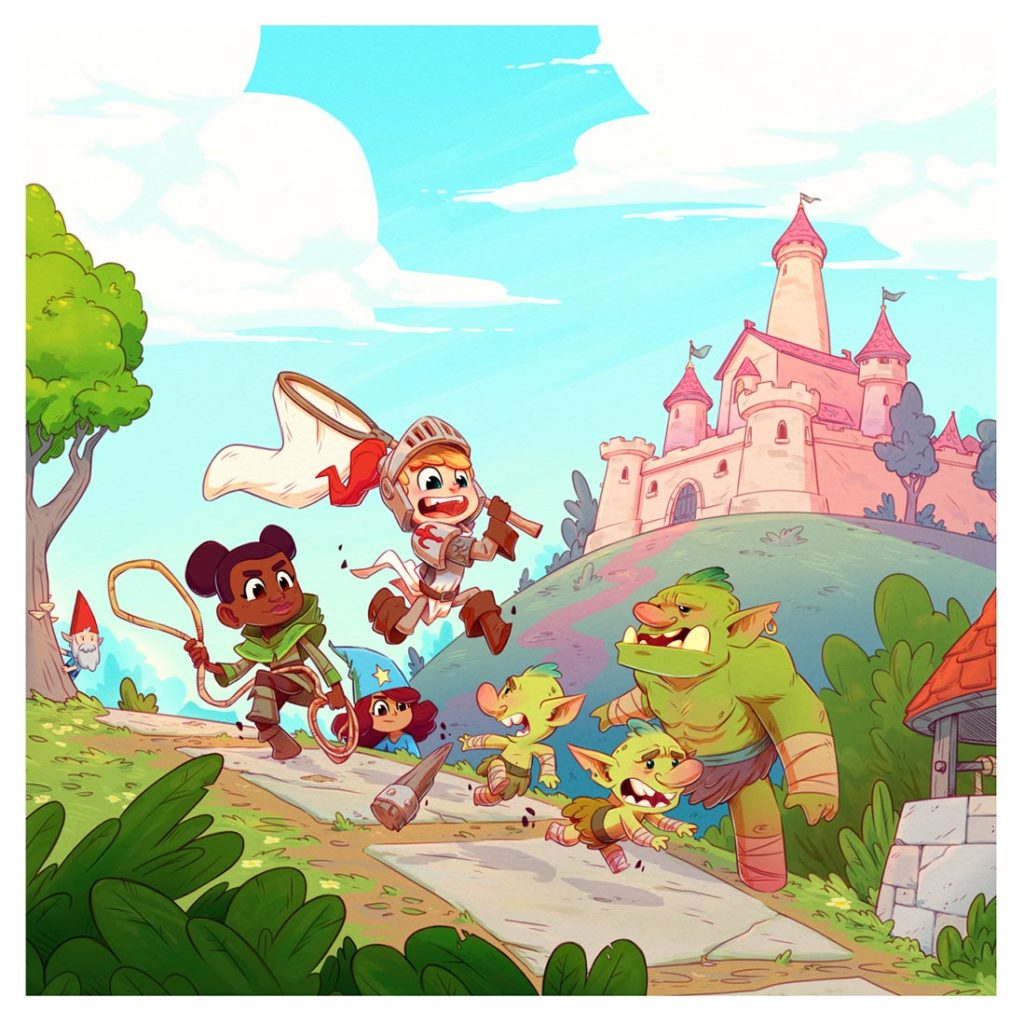
When you are briefed on a new project – what do you find is important?
The most important information I can get from a client is a clear set of expectations. Things like desired emotion/mood for the art, essential elements to include in character and environment designs, and of course, file specifics such as final art dimensions and color profiles. Aside from that, it’s important to be clear about timelines and realistic deadlines.
The most important information I can get from a client is a clear set of expectations.
Cam Kendell
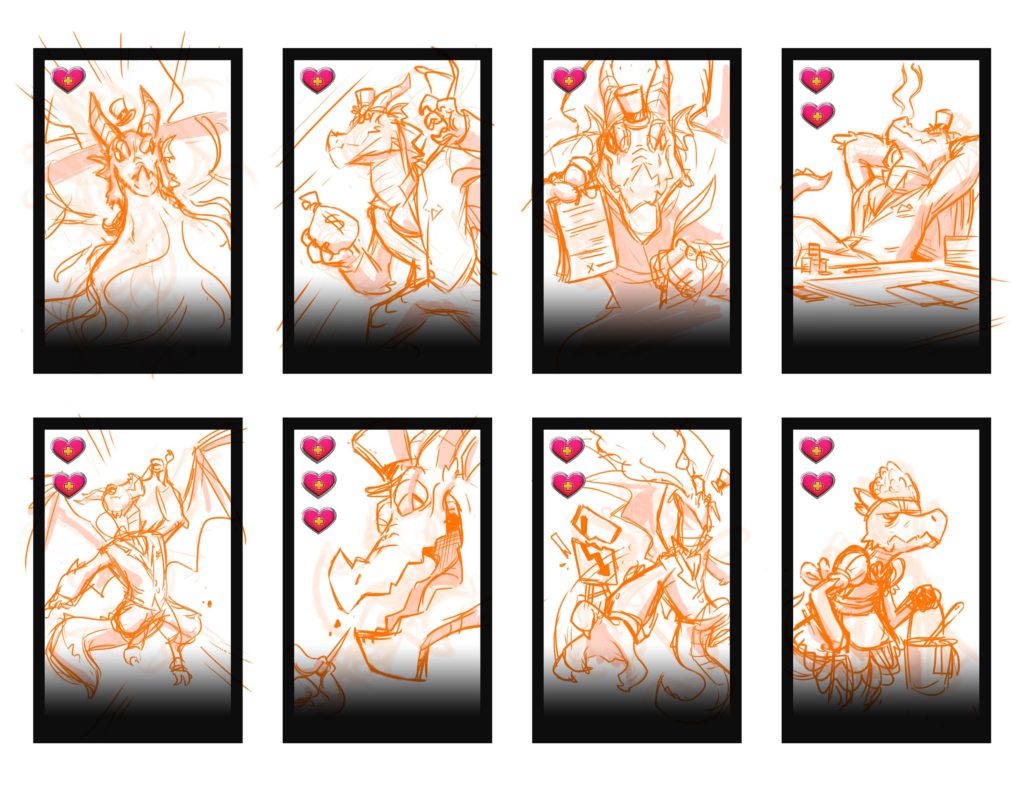
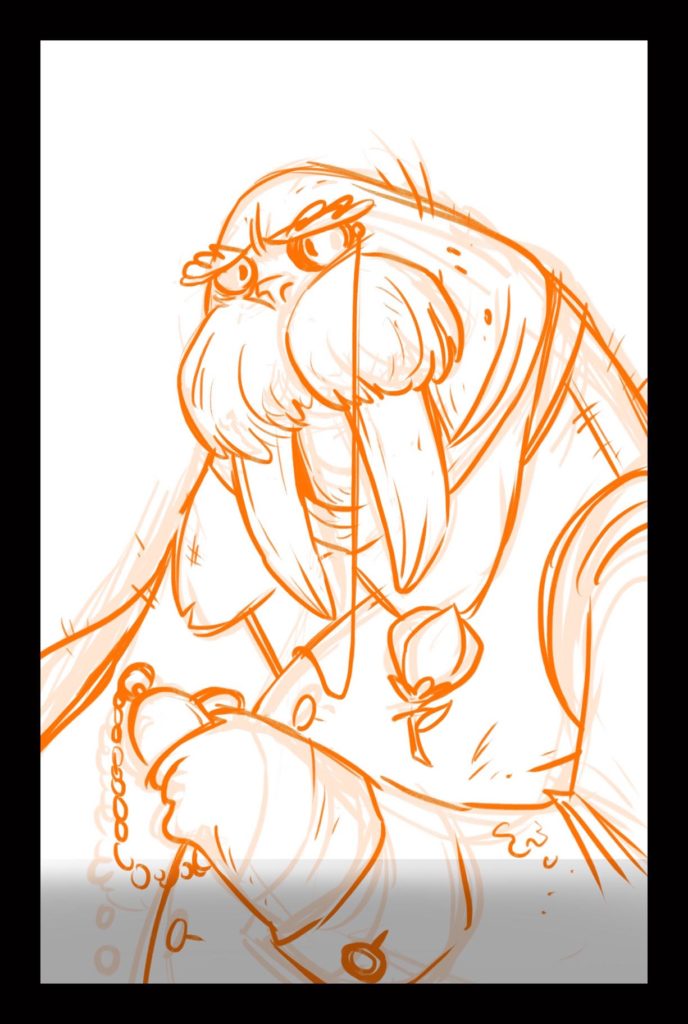
Where do you start on a completely new project – like the 5 minute mystery?
On a new project I dive right in exploratory character and environment sketches and rough thumbnails for full illustrations like box art.
I get a lot of inspiration from looking at photos of architecture, period appropriate fashion and other reference material. For 5-Minute Mystery I began with researching Victorian Era Fashion and Accessories.
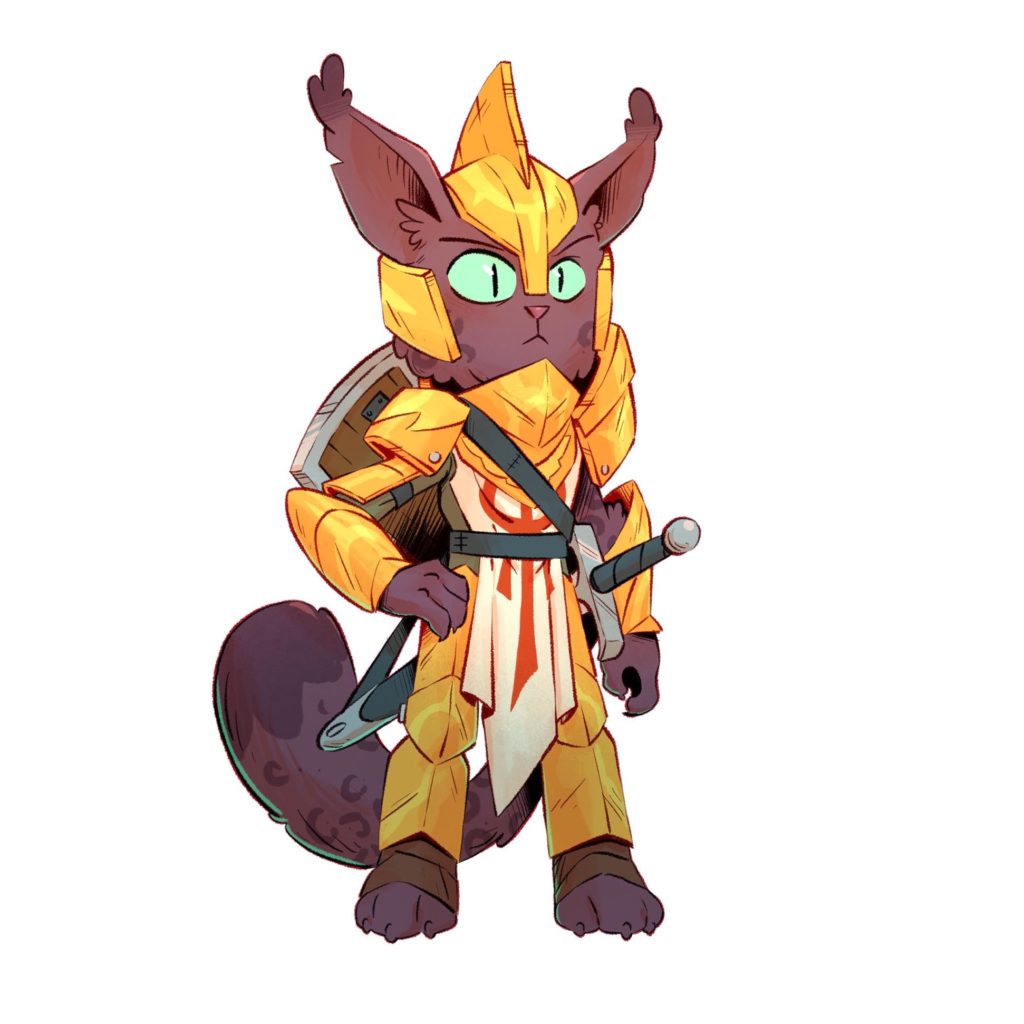
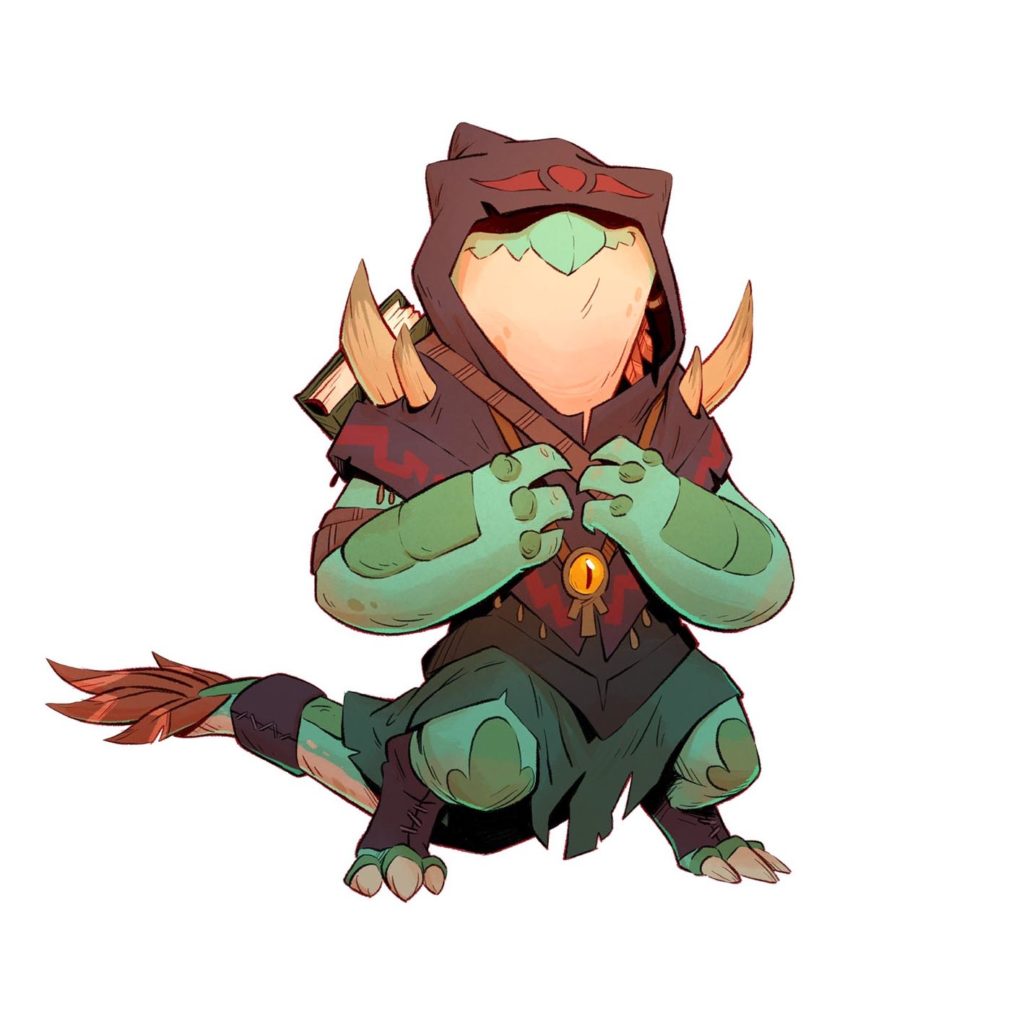
Did the style from Kyle Ferrin’s work on Dungeon Mayhem, affect the way you approached ‘Monster Madness”?
Kyle’s Art is fantastic (read the interview with Kyle here) and adds so much to any game he touches. I first found out about his work when he approached me at a Comic Convention a few years back here in Utah. We’re both from here and live within about an hour and a half from each other. I’ve been a fan of his art ever since.
For my art in Dungeon Mayhem I definitely wanted it to feel in-line with both Kyle and Jake Parker’s previous work. Ultimately that meant keeping the line work black and incorporating some subtle texture in the color. Aside from that I approached it in much the same way as any other project.
Looking at your portfolio you clearly worked with a lot of illustrations – take us through the larger steps in your process when making a piece of art for the game from brief to completion.?
- My first step is always exploring character and environment designs.
- From there I create a number of thumbnail sketches in the same dimensions as the final piece. The purpose of the thumbnail is entirely to focus on the layout and composition of an image. I avoid design details and instead stick with large shapes and values.
- I then enlarge the thumbnail, turn down the opacity (I’m working digitally) and create a refined sketch, filling in the details.
- For the Fourth step, I turn down the opacity of the sketch and ink the line work.
- Lastly, I lay down the colors and final tweaks.
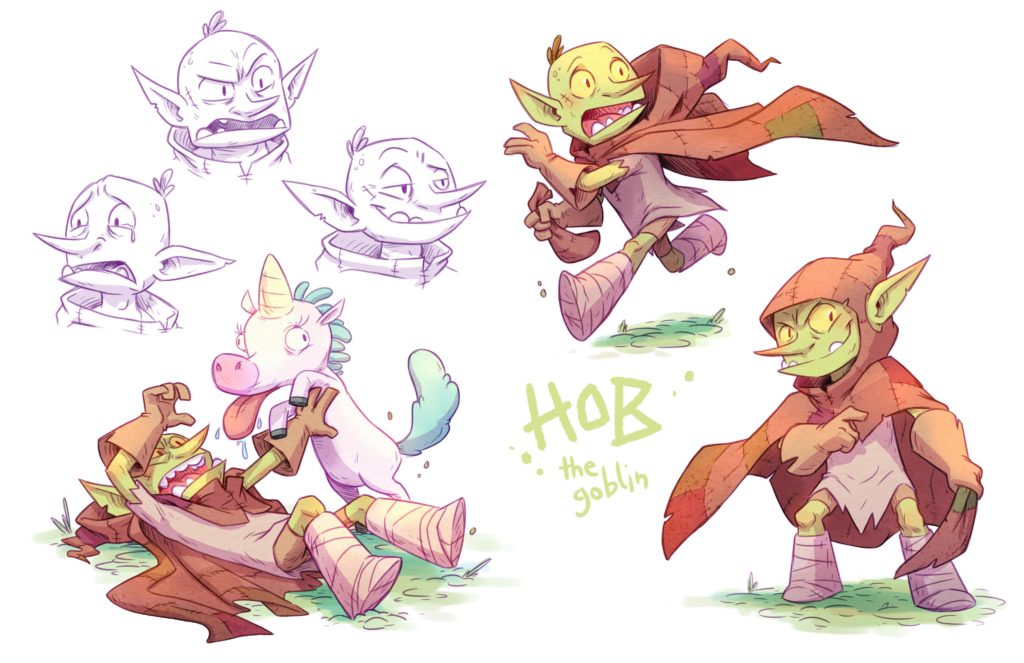
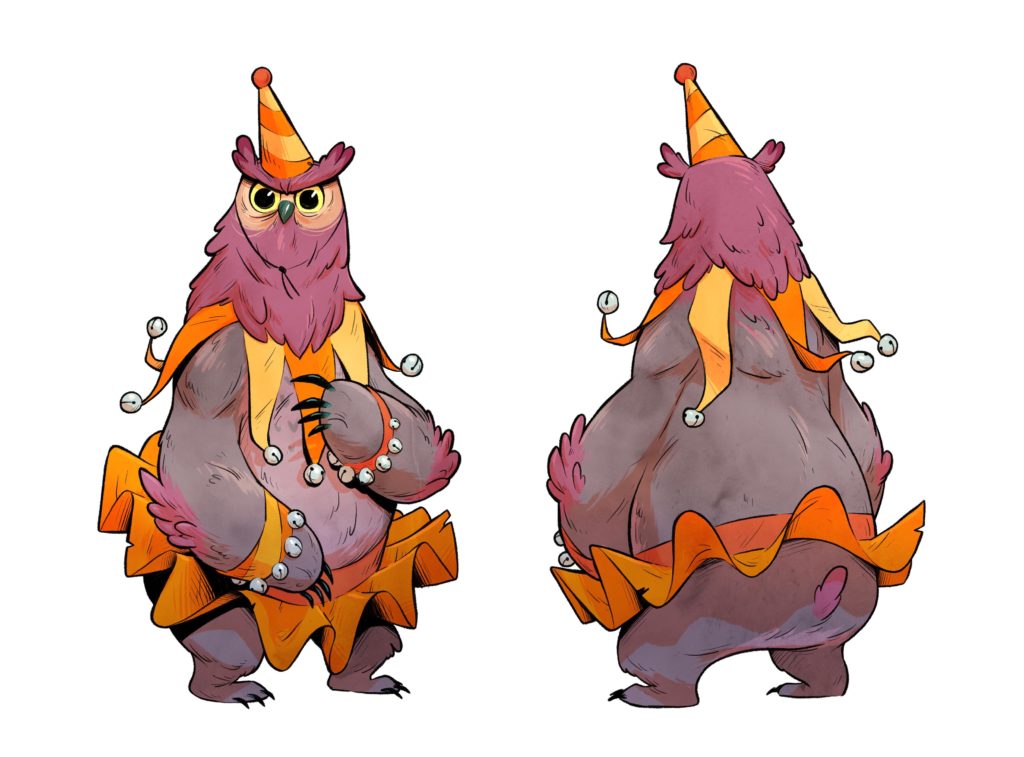
What are your preferred tools?
Currently, I work almost exclusively with a 12.9” first generation iPad Pro, an Apple Pencil, a copy of both Procreate and Clip Studio Paint.
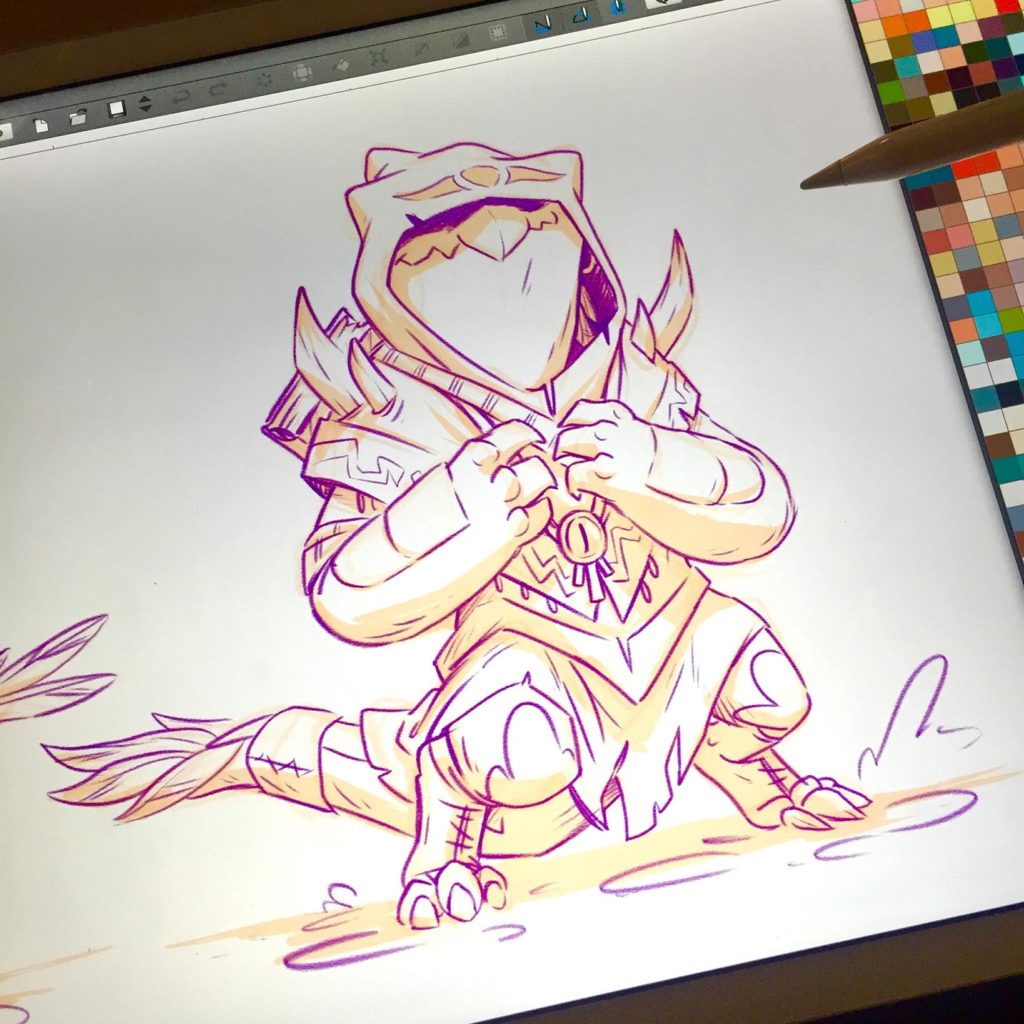
If I’m feeling the itch to work traditionally, I’ll typically use a Kuretake no.8 Brush Pen with Platinum Carbon Ink or a good old dip pen and I’ll break out the Watercolors and/or Copic Markers.
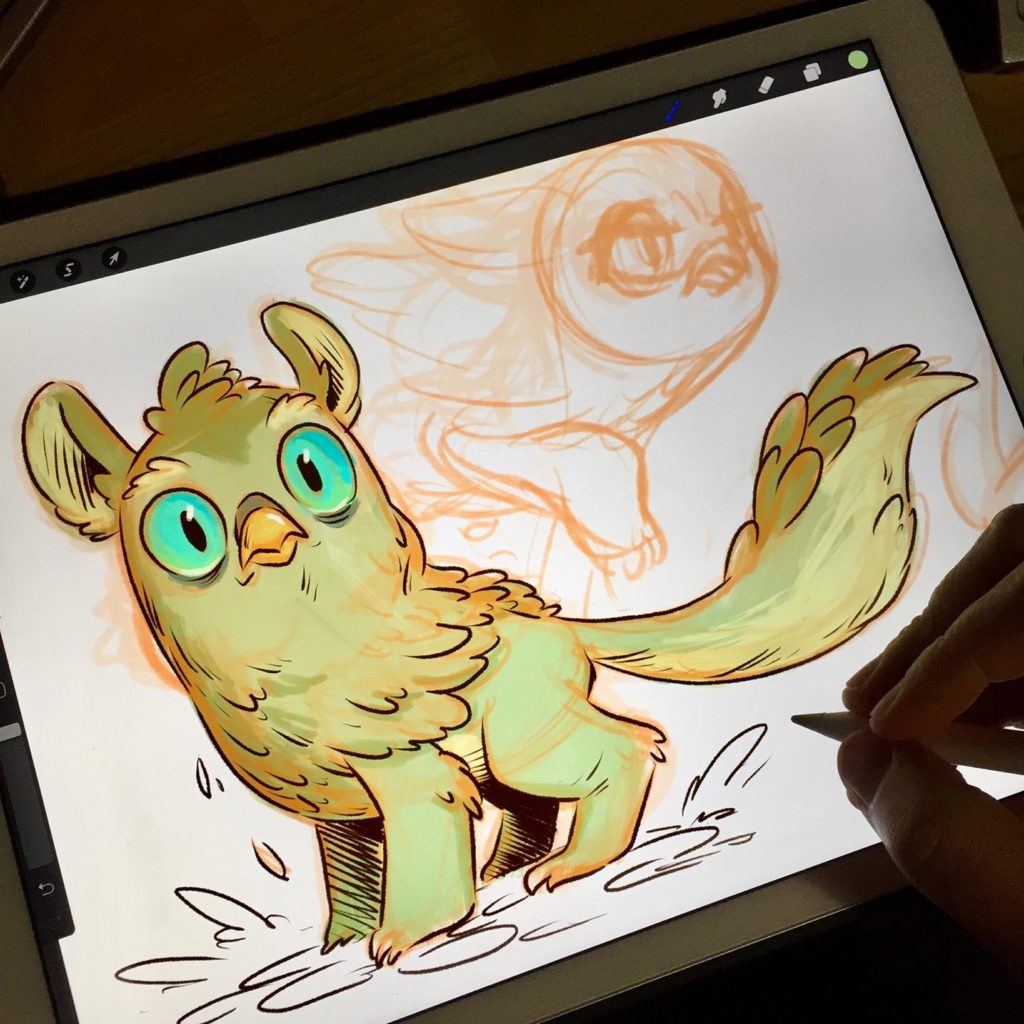
Describe your current workplace?
My current workplace has largely been the Dining room table. 
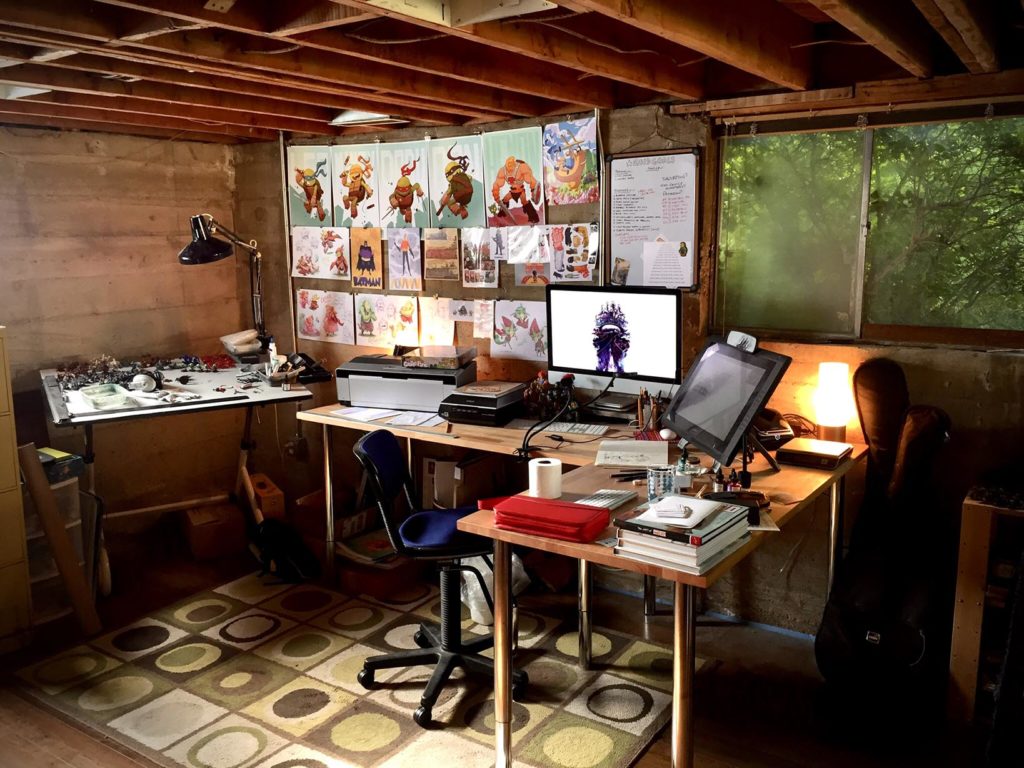
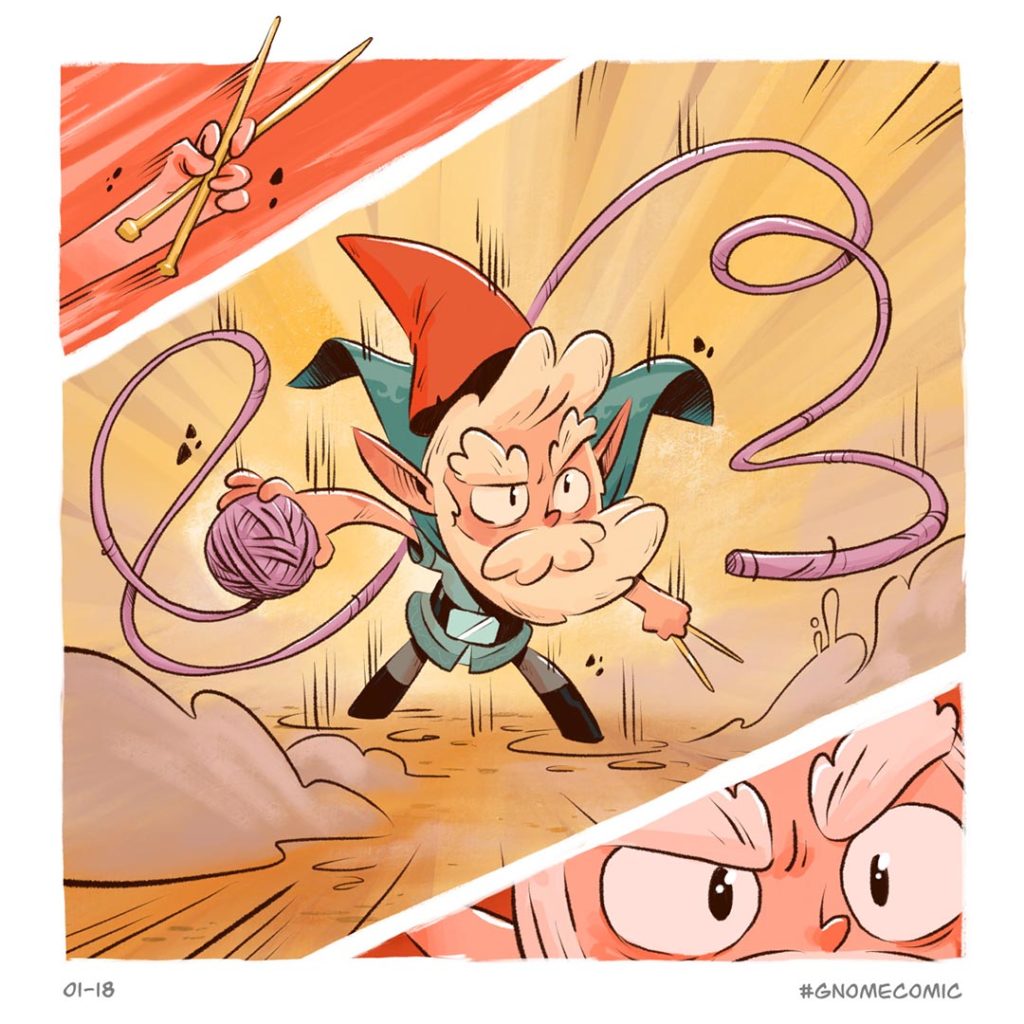
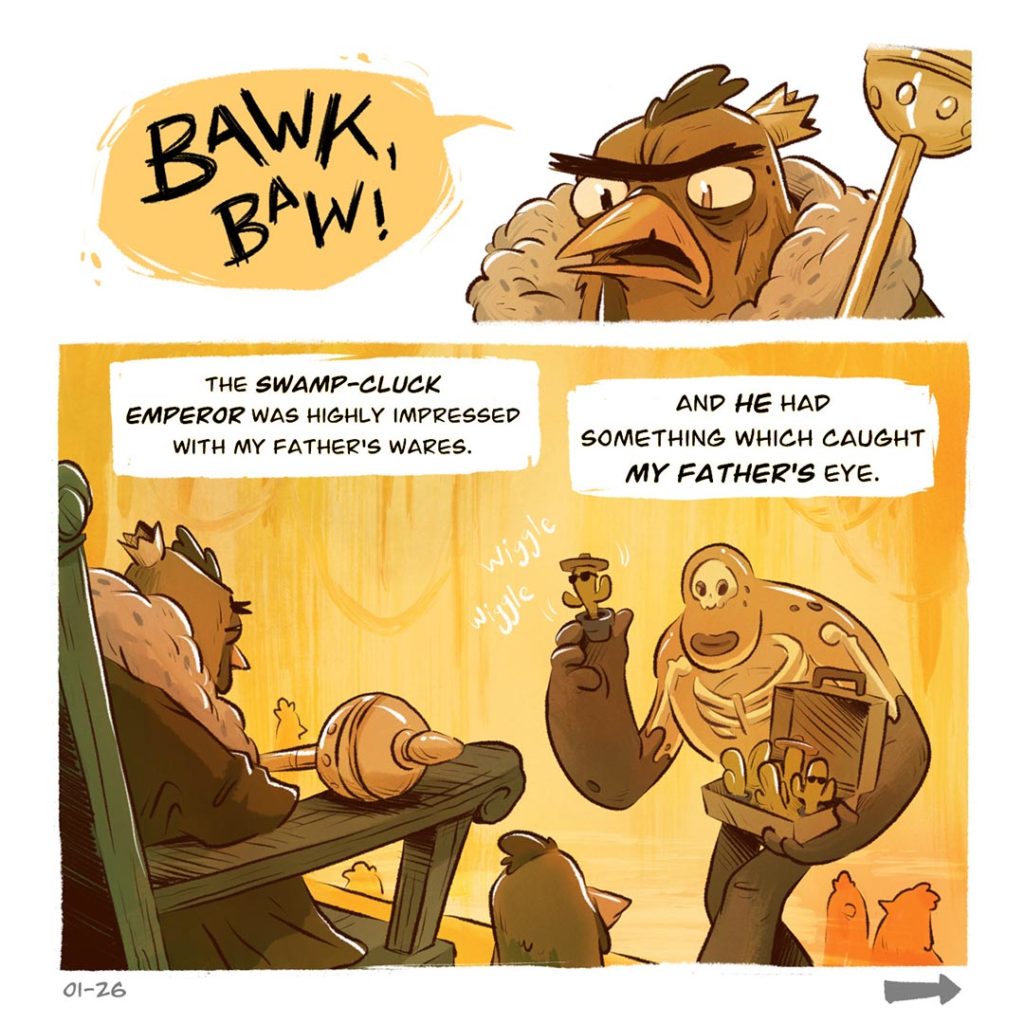
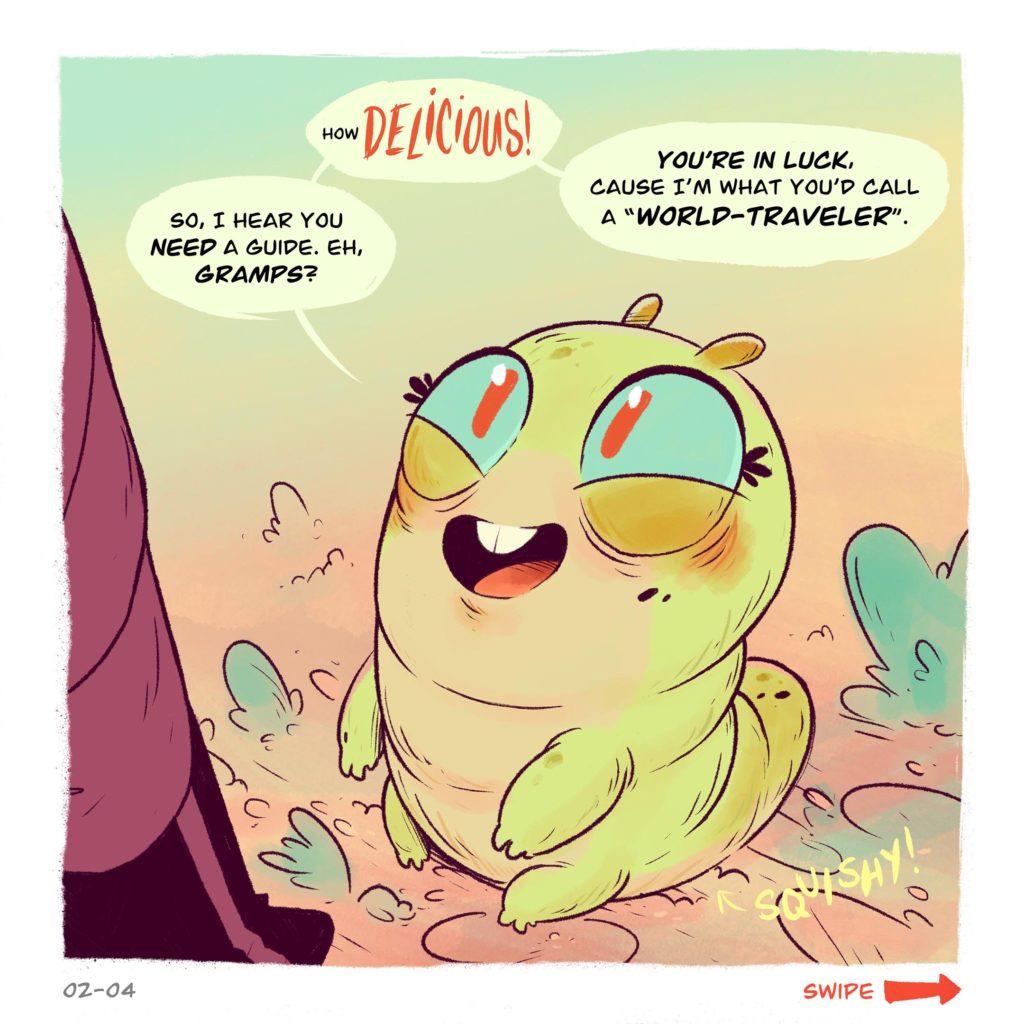
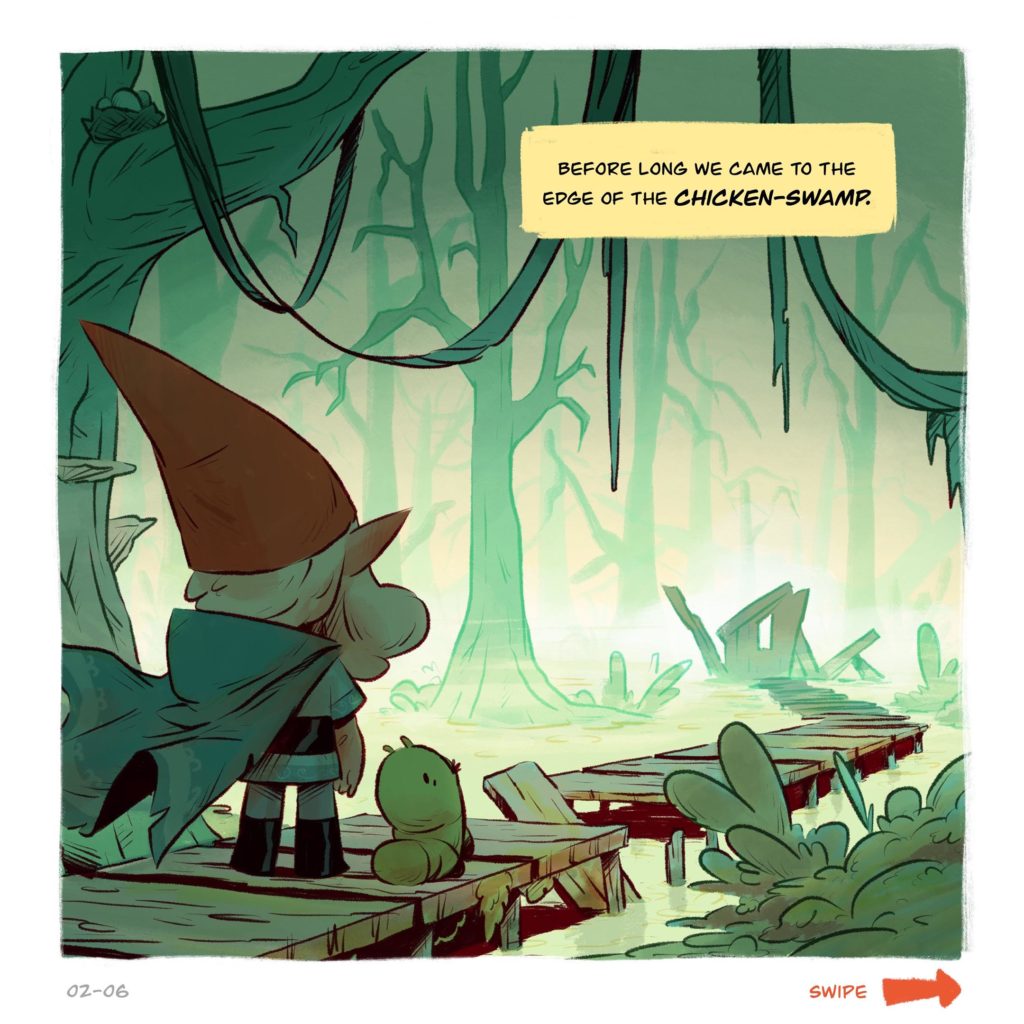
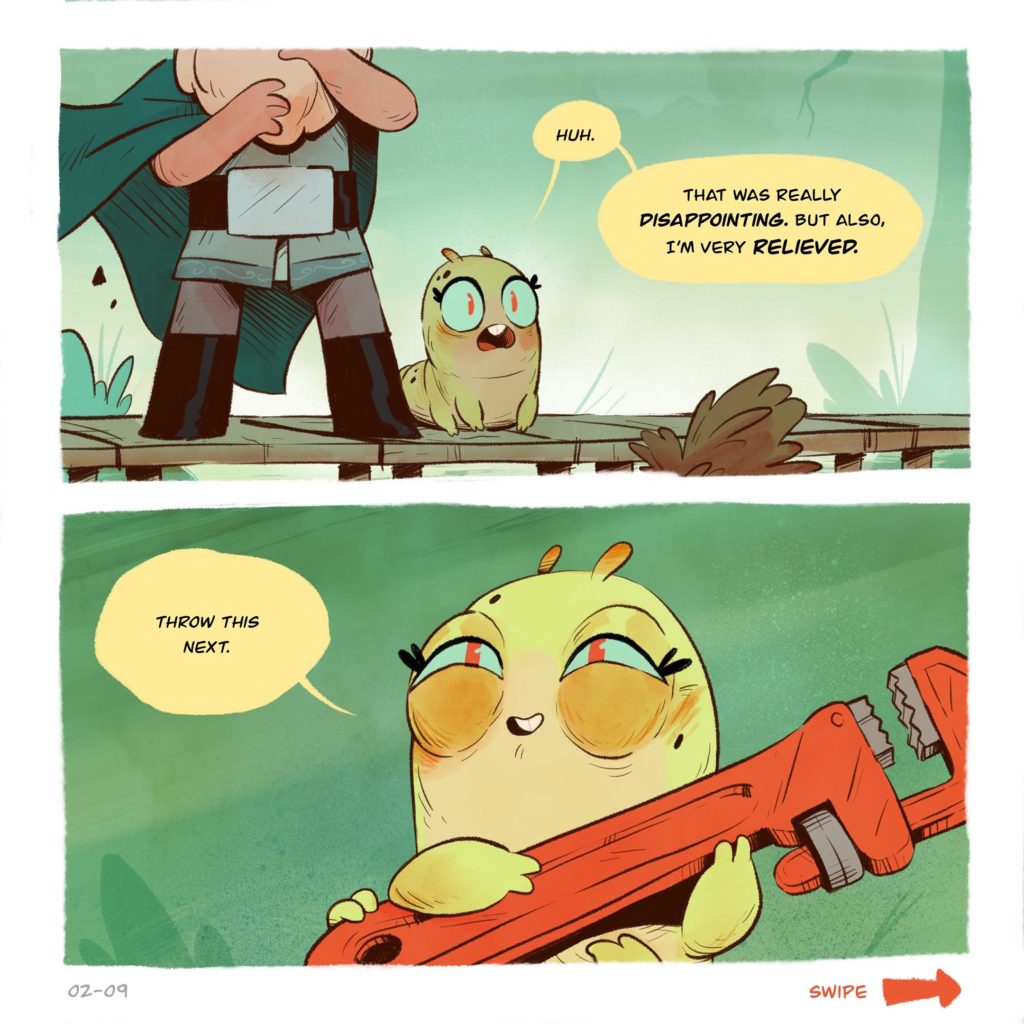
What would you say is the difference between making art for comics and making art for games?
Comics and Board Games share a lot in regards to how I approach the art. For me, the focus of both have to be emotional impact. The goal of every piece of art is to convey and/or evoke emotion in the consumer. Individual art assets like cards or other game components are similar to individual panels in a comic they can tell a story though usually in a less linear format in the case of games. Also, the box art for a game serves basically the same purpose as a comic book cover.
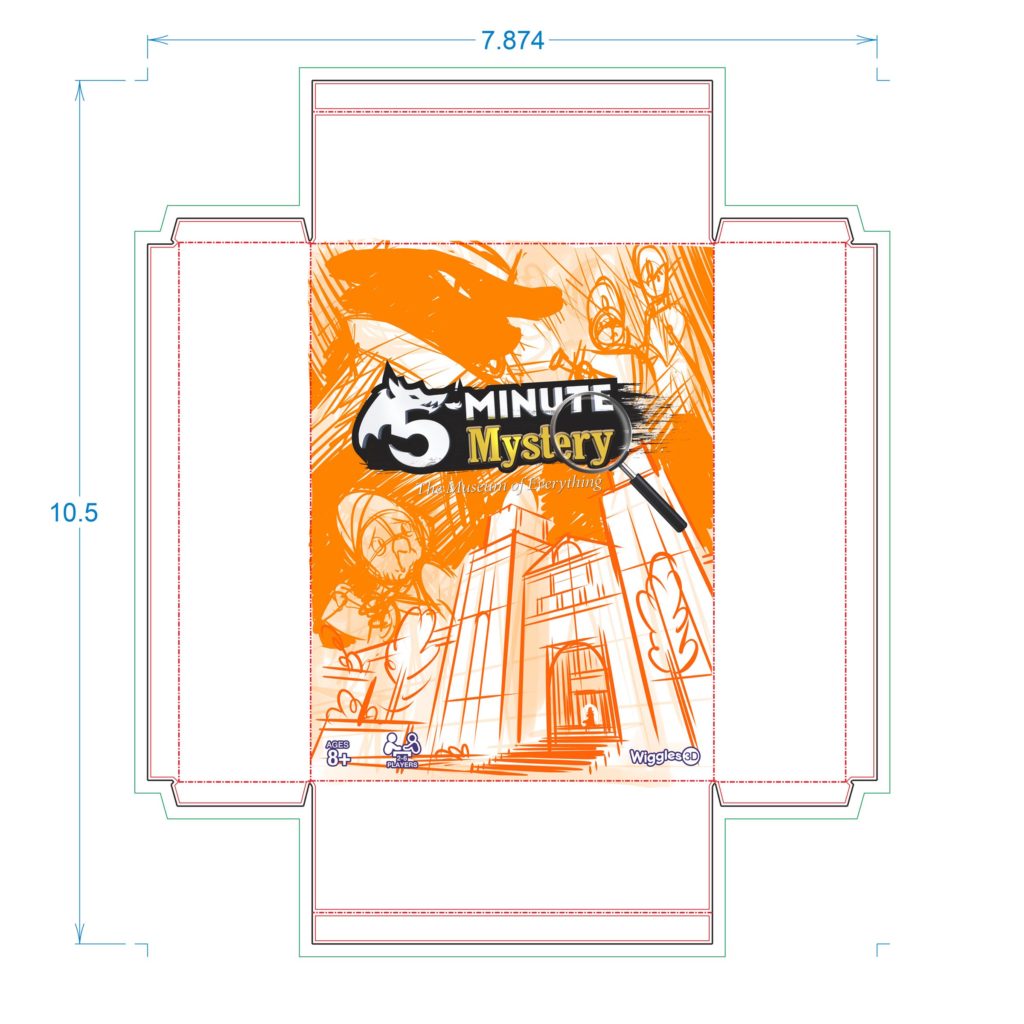
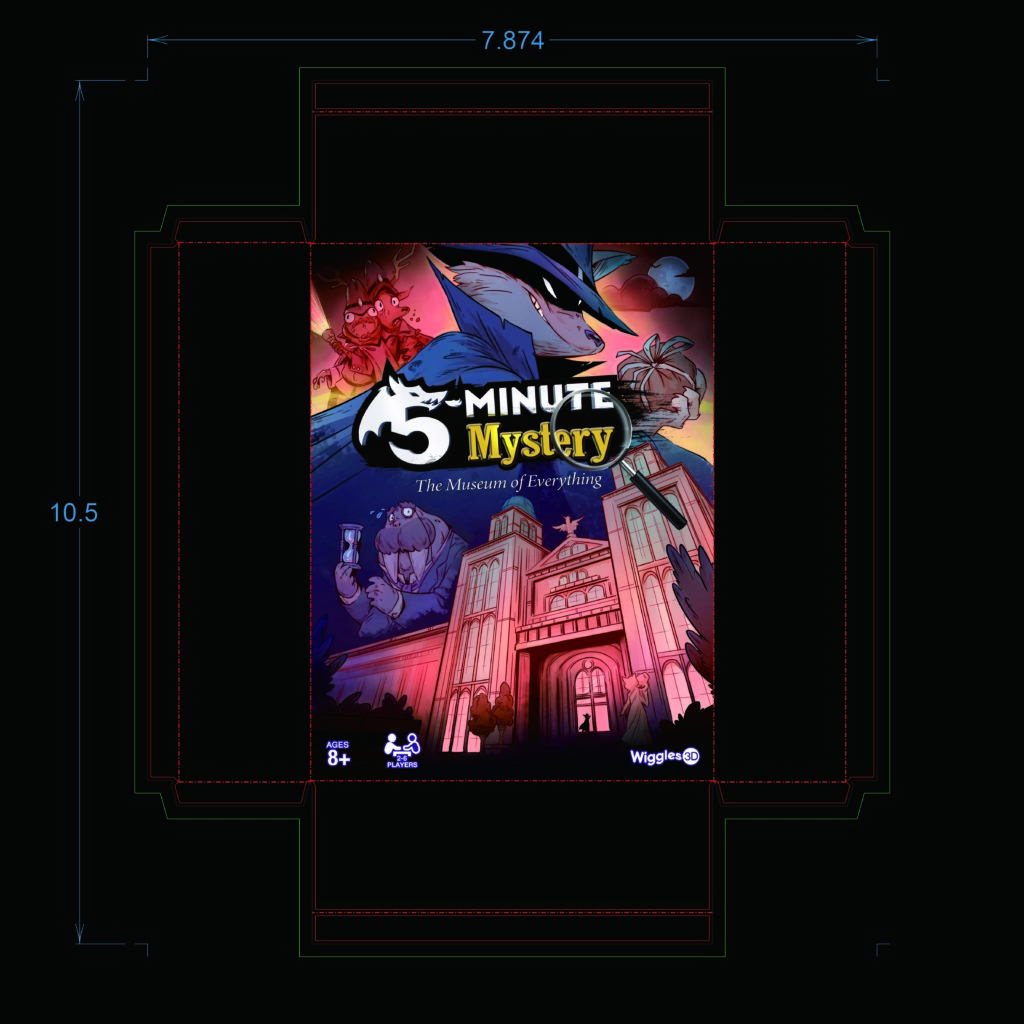
The goal of every piece of art is to convey and/or evoke emotion in the consumer.
Cam Kendell
Where the two diverge is mostly in the story they tell. With comics, my goal is to tell a specific story with an end and beginning and help the reader connect with it. My goal with a board game is to provide the details and flavor of a story while leaving it open-ended enough for the player to make it their own.
Have you learned anything new from working on these last game projects?
I still love working on Board Games!
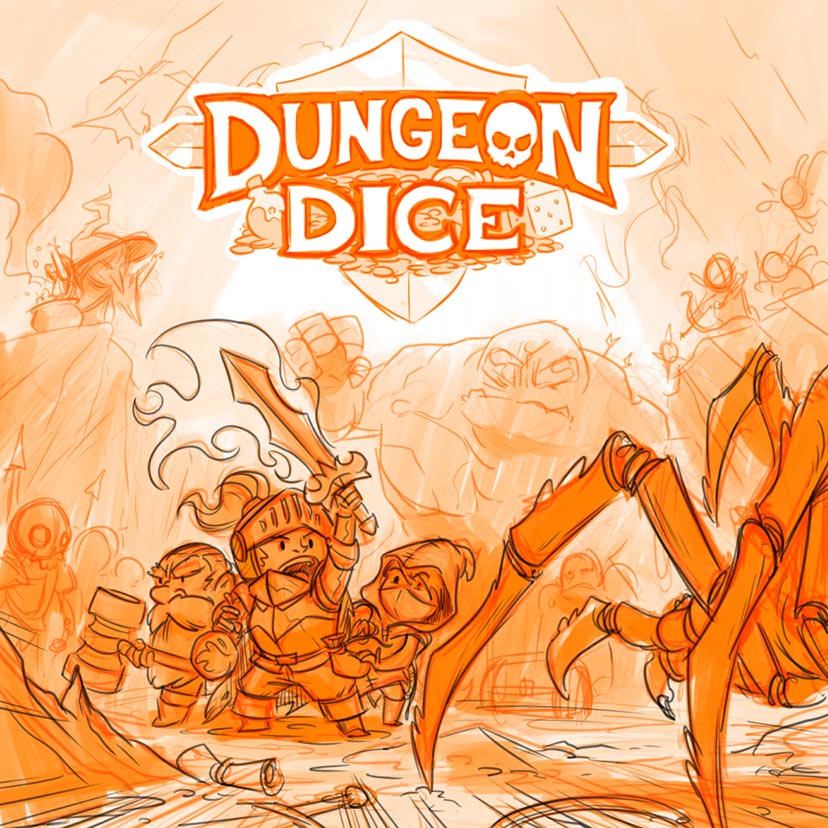
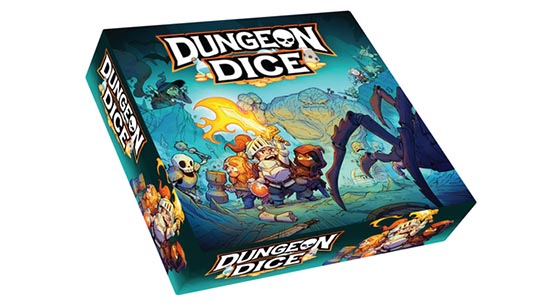
What’s the best piece of advice on making art, you yourself have been given by someone or learned through your career?
Don’t try to be somebody else. Learn from other artists, enjoy their work, allow the art you like to influence your work, study and strive to improve your craft, but ultimately, embrace your own style with all it’s quirks. It is your life experiences, views, and personality that ultimately contribute to your style and trying to “draw like so-and-so” will only result in frustration. Draw your best and you will certainly find the audience that connects with it.
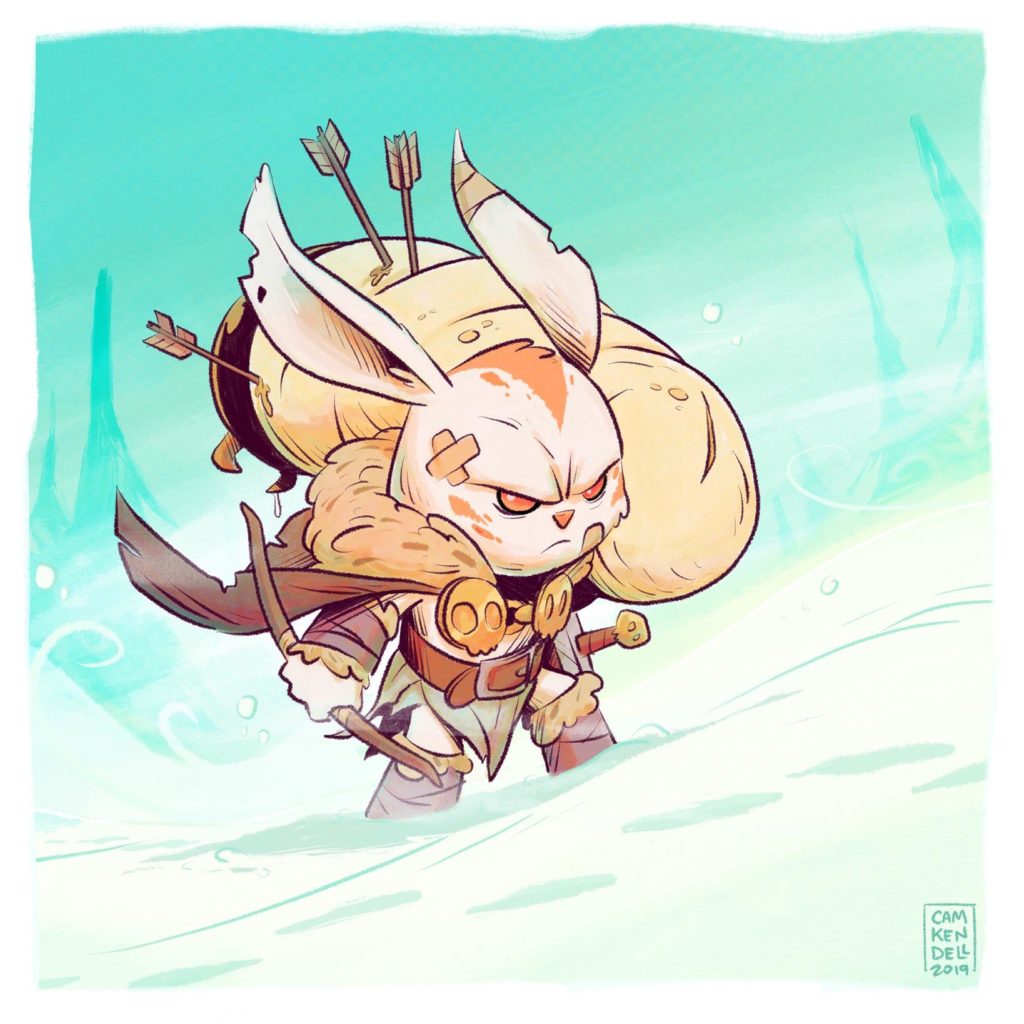
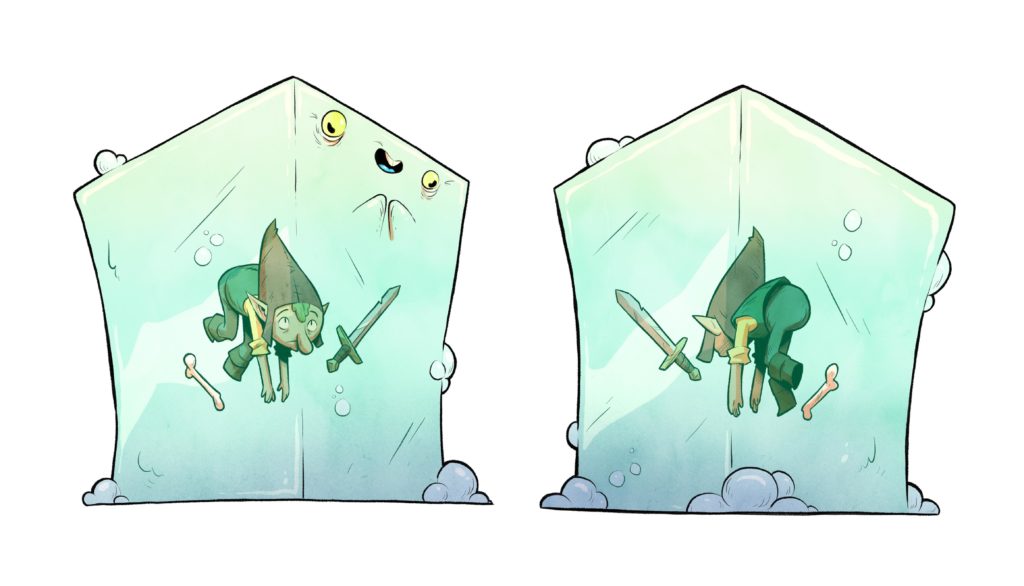
Name up to 3 artists you admire?
Limiting it to 3 is difficult. But I’ll try
- Anthony Holden (incredible artist working in comics and animation)
- Fabien Mense (French Comic Book Artist and Character Designer who illustrated the Board Game 75 Gnom’ Street)
- Maynard Dixon (American Painter with bold color and shapes. His piece Forgotten Man is one of my favorites)
Great. And where can people find more about you and what is your next project?
Currently I’m Illustrating a series of D&D inspired Middle Grade novels for Roaring Brook Press which is taking a lot of my time.
In the Table Top world I’m providing illustrations for the role playing game Little Legends.
I’m currently posting a Choose Your Own Adventure style Online Comic called Choose Your Gnome Adventure at www.gnomecomic.com
I also have a few games of my own in the works that I plan on Kickstarting down the road.
You can follow me online on Twitter and Instagram: @camkendell
Check out my site www.Camkendell.com for products and projects I’m working on.
Or, support my work, vote on the gnome comic, and get behind the scenes content on my Patreon page: www.patreon.com/camkendell
Interesting – we will look forward to see any personal project from you.


